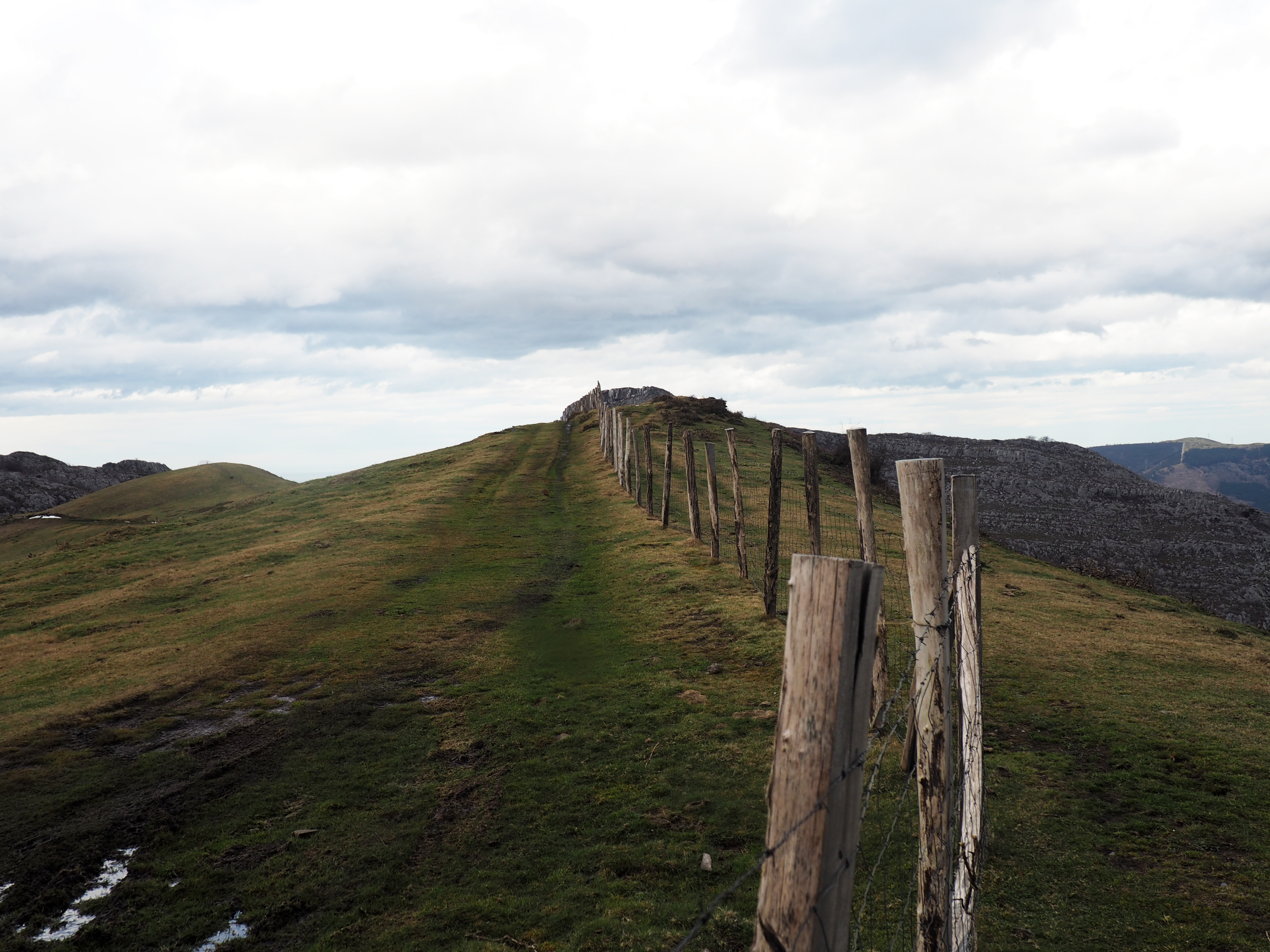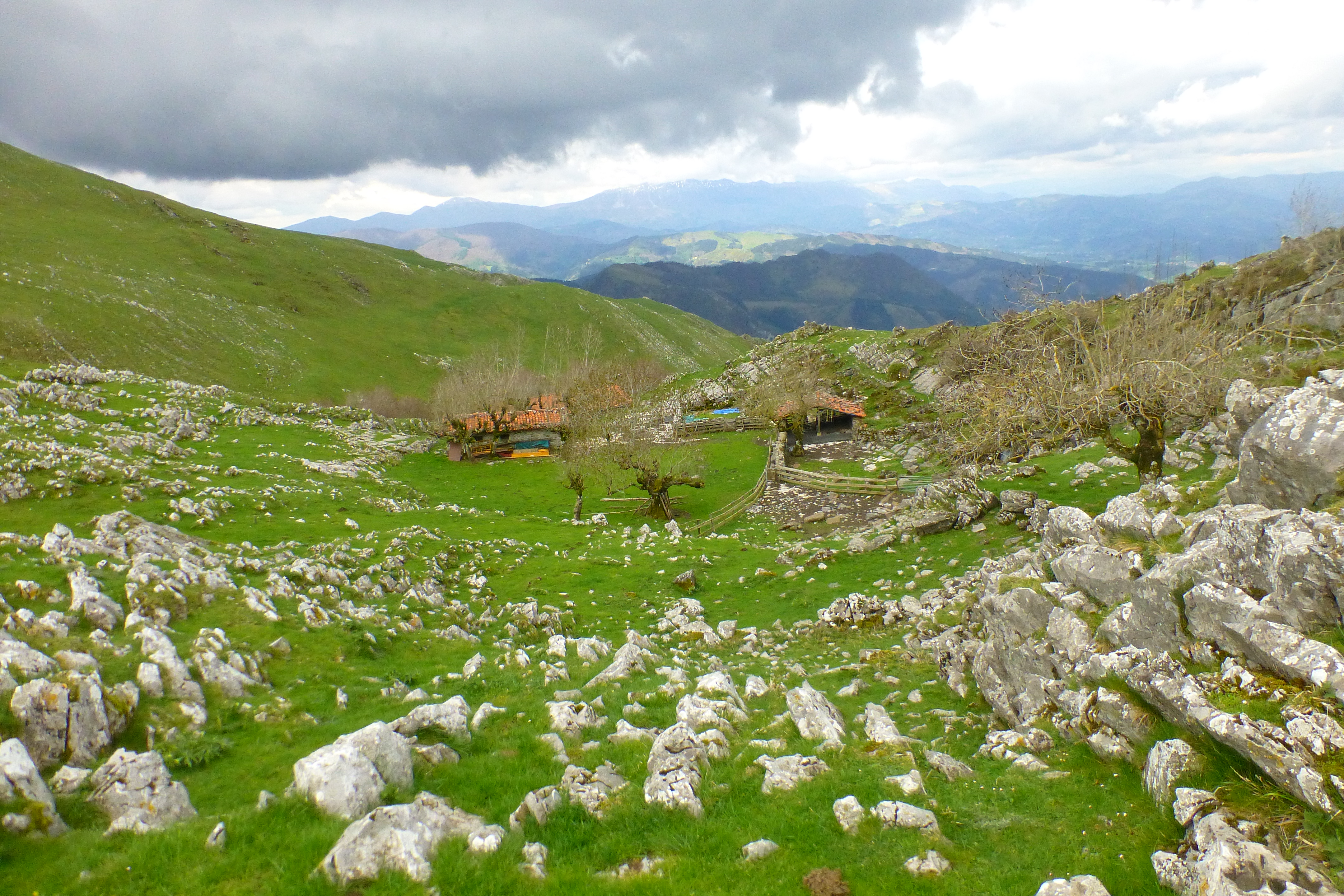Archives
Until about four decades ago, before the disappearance of traditional shepherding, one of the most prized possessions of the shepherds from Gorbeia was the taloaska. It was, together with the makila (walking stick), the element that shepherds were most proud to show off in their huts, the most highly valued asset.
The taloaska is basically a kind of rectangular kneading trough, with a handle at one end, and it was used to knead the talo (similar to a Mexican corn tortilla) that was eaten during those endless stays in the sheepfold, as a substitute for bread, as it was only eaten when strictly necessary. Bread could not be made in the mountains, but the versatile talo could.

Wire fence in the mountain, 2018. Sergio Fernández Olazabal.
Those born in border areas surrounded by mountains and devoted to activities developed in these spaces, such as the breeding of Monchino cows and mares or sheep farming, have a very different vision of borders to that of government officials and politicians who show no more than lawful respect for them. (more…)

Flock of sheep grazing in Mount Oiz (Bizkaia), 2002. José Ignacio García Muñoz. Labayru Fundazioa Photographic Archive.
It being such a rainy winter in our country, I have been reminded of a legend retold by shepherds in the course of fieldwork conducted in localities bordering Mount Oiz in 1997. Neither too much rain nor too much sun are indeed known to be beneficial to pastures and soils. (more…)

Aralar Range. José Ignacio García Muñoz. Labayru Fundazioa Photographic Archive.
Those of you who acknowledge the worthy work shepherds do today might be surprised at the title, for tending large flocks of sheep does not leave much time for games.
One would have to go back more than a century to find flocks in those days hardly reached the hundred head of sheep. Besides, shepherds moved to their huts in the summer pastures, where they lived with their families: wife and children. (more…)



